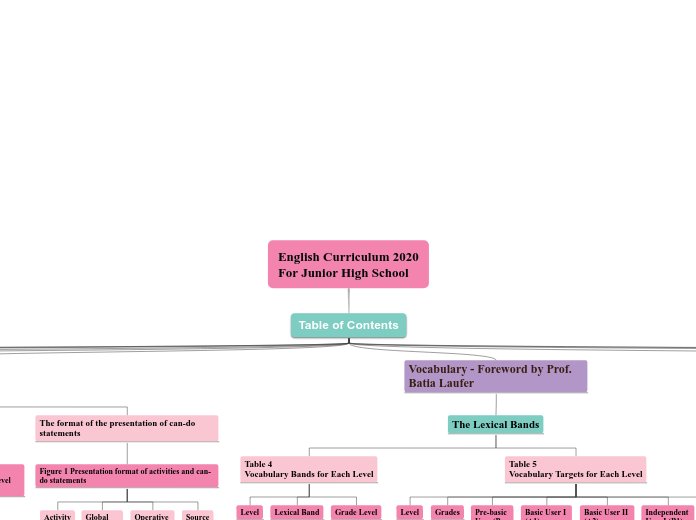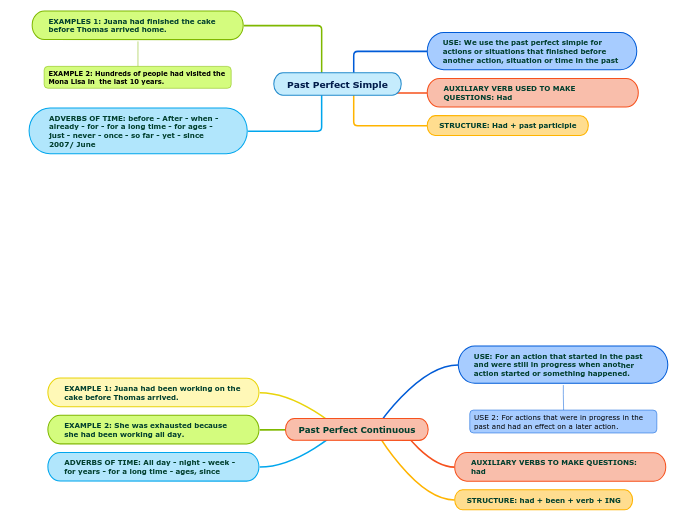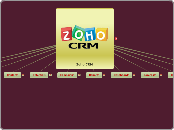English Curriculum 2020
For Junior High School
Table of Contents
References
Global Can-do Statements
Basic User II- A2 (Intermediate)
Basic User II (A2)
Can-do descriptors
Adjective / adverb forms
Noun Forms
Verb forms
Clauses
Table 6
Grammatical Structures for Grades 7, 8 and 9
Communicative Competences
Plurilingual and pluricultural competence
Spoken fluency
Pragmatic
Sociolinguistic
Orthographic control
Phonological control
Linguistic (Band II Vocabulary and Grammatical Elements)
Activities
Language B = communication output
Language A = communication source
Written interaction
Spoken interaction
Written production
Spoken production
Written reception
Spoken reception
Grammar - Foreword by Prof. Elite Olshtain
Grammatical constructions in English can be characterized by three dimensions:
3) use in terms of pragmatic appropriacy
2) meaning
1) structure or
form,
Traditional grammar teaching
Meaning
Form
Format of the grammar component
Figure 2 Presentation format of grammatical structures and can-do statements
Examples
Global can-do
statement
Structure
Description of the grammar component
Mastery of grammar:
Evolving usage and accuracy
Emerging production
Mostly receptive
Vocabulary - Foreword by Prof. Batia Laufer
The Lexical Bands
Table 5
Vocabulary Targets for Each Level
Independent
User II (B2)
Independent
User I (B1)
Basic User II
(A2)
Basic User I
(A1)
Pre-basic
User (Pre
A1)
Grades
Table 4
Vocabulary Bands for Each Level
Grade Level
Lexical Band
Level
Sources for Can-do Statements and Format of Presentation
The format of the presentation of can-do statements
Figure 1 Presentation format of activities and can-do statements
Source
Operative
can-do
statement
Global
can-do
statement
Activity
Four sources served as a basis for formulating the can-do statements:
The Guidelines for the
Teaching of English at the Pre-Foundation Level (GEPF)
the Australian Curriculum (AUS)
the Global Scale of English (GSE)
CEFR
Levels of Progression
Table 3
Comparison of Levels
Revised English
Curriculum 2018
CEFR Global Scale
English Curriculum 2020
Principles to Guide Teaching Practice
F. Principles underlying the integration of ICT
E. Principles underlying classroom assessment
D. Principles underlying the design of tasks
C. Principles underlying the selection of materials
B. Principles underlying beginning language learning and teaching
Table 2
Principles of Beginning Language Learning and Language Teaching
A. Principles underlying language learning and language teaching
Table 1
Principles of Language Learning and Language Teaching
Curriculum Components
Grammar
comprises lists of structures
Vocabulary
Words and Chunks
Bands
Domains
Personal domain
Public domain
Occupational domain
Educational domain
Can-do Statements
operative Can-do Statements
global Can-do Statements
Interdependent dimensions:
language activities
Mediation
Mediation involves:
Interaction
reception
production
Production
written production
Oral production
Reception
written reception (reading comprehension)
oral reception
(listening comprehension)
communicative competences:
Pragmatics
Sociolinguistic competence
Linguistic competence
phonological and
orthographic control
grammatical accuracy
vocabulary size and depth
general
linguistic range
Alignment with the (CEFR) for languages
Introduction









